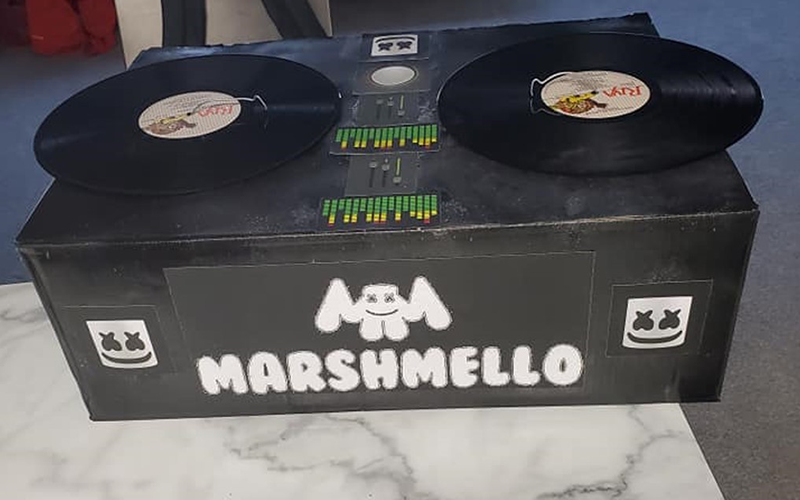Halloween has been quite the topic this year! Not only has it been the topic for discussion in most households due to COVID-19, but it has also been in the news for Target’s new adaptive costumes.
With options ranging from a vibrant dragon to a plush unicorn, you can either find costumes thoughtfully designed for those with sensory needs or inclusively designed for wheelchair users.
Of course, as my son Oliver could very well demonstrate, you do not need an adaptive costume to have fun! With little tweaks here and there, any costume could be an option for your kiddo or kiddos.
Although you won’t find it in Target’s adaptive costume section, Oliver wants to be Marshmello (the DJ) this year. I am not the handy momma as some of you might be, but we had our first trial run of what we envision the costume to look like. (See photo for the cuteness overload!) Because we chose to make the costume somewhat, modifying it was not hard. We started with the unmistakable mask that Marshmello is known for.
On Amazon I found a mask that goes on and comes off with ease and even lights up in different colors with the use of a remote. Digging from his mounds of clothes, I was able to find a simple white t-shirt and white pants to make the outfit. Per Oliver’s request, we completed the look with all red shoes.
Now the fun part could begin; designing a portable DJ booth for his wheelchair. Using a simple cardboard box we got from a previous package, we spray painted that black and added some print out decals to make buttons and speakers.

For the records, this was executed with a trip to an antique shop in which I scored a deal for two vinyl records for five dollars! Reserving a spot in the box for my phone to play music while out, his stage was now set. Now we have to just patiently wait for Halloween before he can debut his look; but until then we will just have to figure out exactly what our plans will be given the current world crisis.
Whereas Target has done amazing things for our community by including an adaptive costume line, there are always ways you can tweak other costumes on the market or even make your own. It is such a fun time to get creative and have fun. I would love to hear what you may have planned for your family and kiddos this year on Halloween day and what they will be dressing up as!